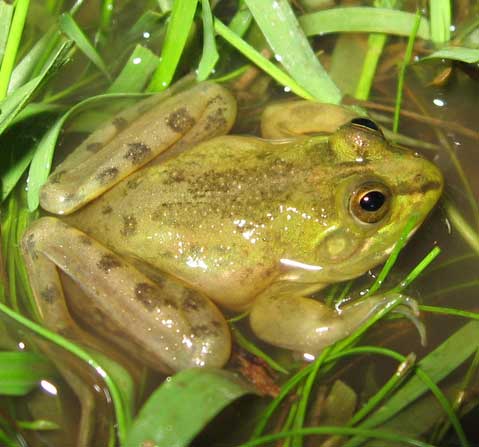Cladus: Eukaryota
Supergroup: Opisthokonta
Regnum: Animalia
Subregnum: Eumetazoa
Cladus: Bilateria
Cladus: Nephrozoa
Cladus: Deuterostomia
Phylum: Chordata
Subphylum: Vertebrata
Infraphylum: Gnathostomata
Superclassis: Tetrapoda
Classis: Amphibia
Subclassis: Lissamphibia
Ordo: Anura
Subordo: Neobatrachia
Familia: Hylidae
Subfamilia: Hylinae
Tribus: Dendropsophini
Genus: Pseudis
Species: Pseudis minuta
Name
Pseudis minuta Günther, 1858
Type locality: "Maldonado, República del Uruguay".
Holotype: BM 1947.2.25.96 (formerly 1934.9.1.26).
Synonyms
* Pseudis minuta Günther, 1858
* Lysapsus mantidactyla Cope, 1862
* Pseudis brasiliensis Peters, 1863
* Pseudis mantidactyla — Boulenger, 1882
* Pseudis meridionalis Miranda-Ribeiro, 1926
* Pseudis minutus — Savage and Carvalho
* Lysapsus mantidactylus — Gallardo, 1961
* Podonectes minutus — Garda and Cannatella, 2007
References
* Günther, 1858, Arch. Naturgesch., 24: 319.
* Garda and Cannatella, 2007, Mol. Phylogenet. Evol., 44: 104.
* Frost, Darrel R. 2007. Amphibian Species of the World: an Online Reference. Version 5.1 (10 October, 2007). Electronic Database accessible at [1] American Museum of Natural History, New York, USA. Pseudis minuta . Accessed on 16 Apr 2008.
* 2007 IUCN Red List of Threatened Species IUCN link: Pseudis minuta (Least Concern) Downloaded on 16 April 2008.
Vernacular names
Internationalization
English: Lesser Swimming Frog

